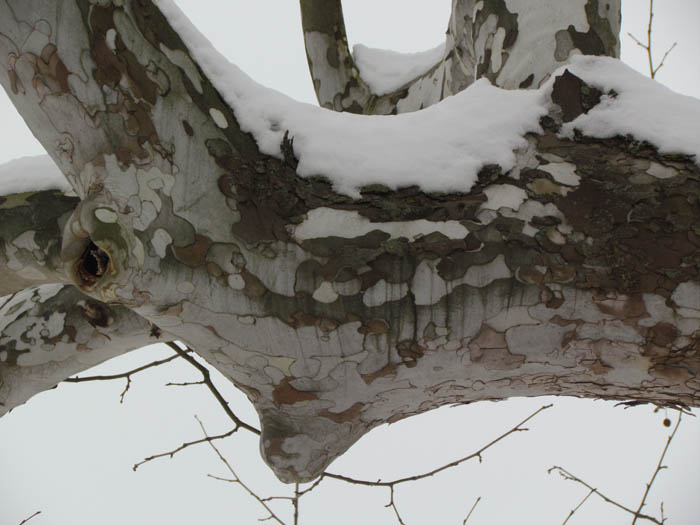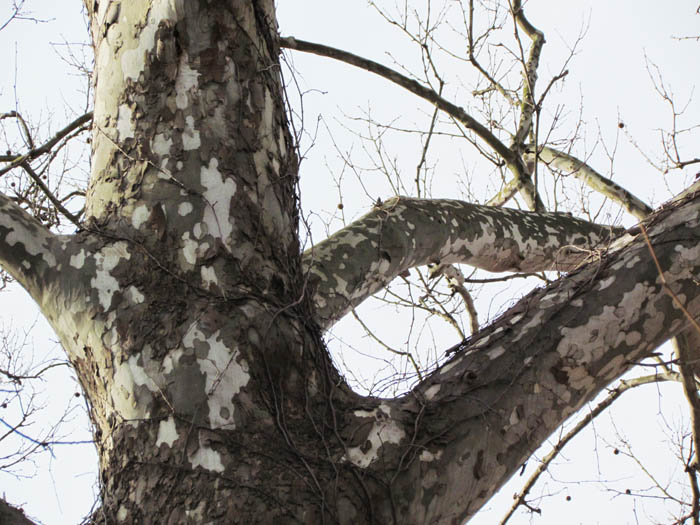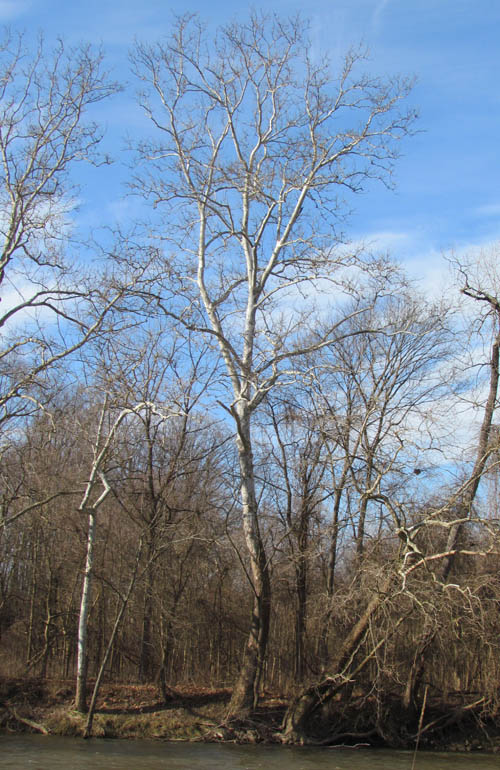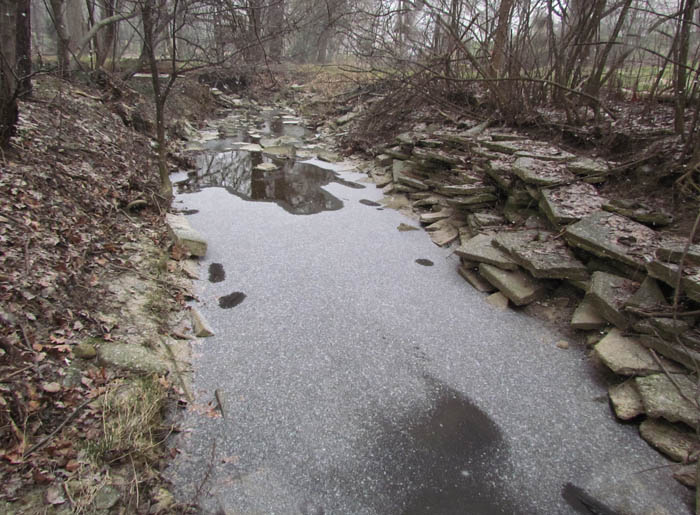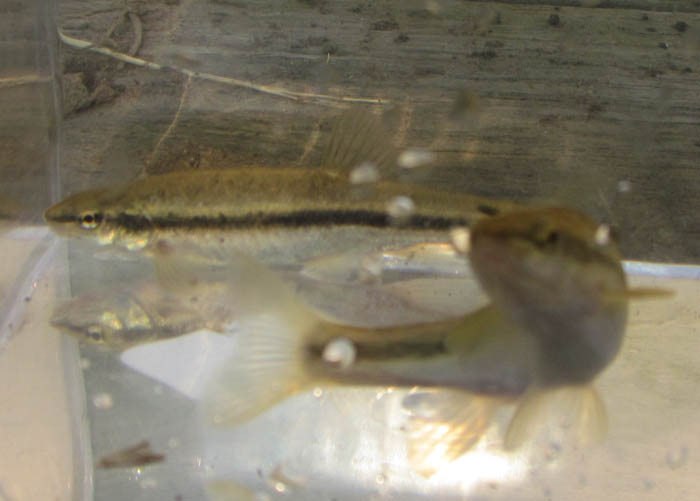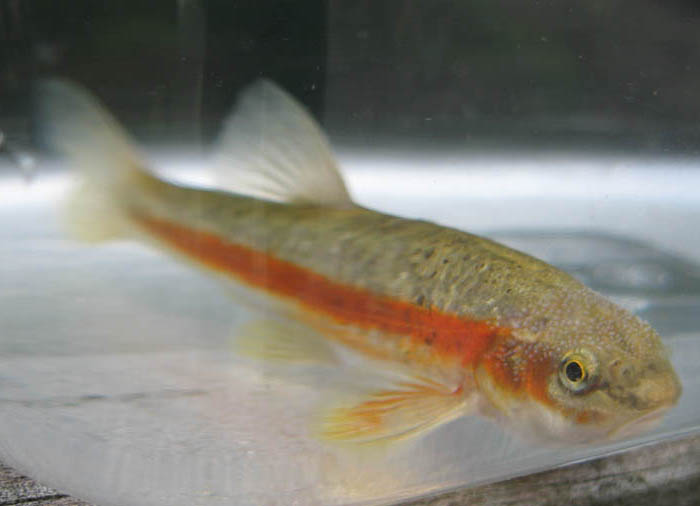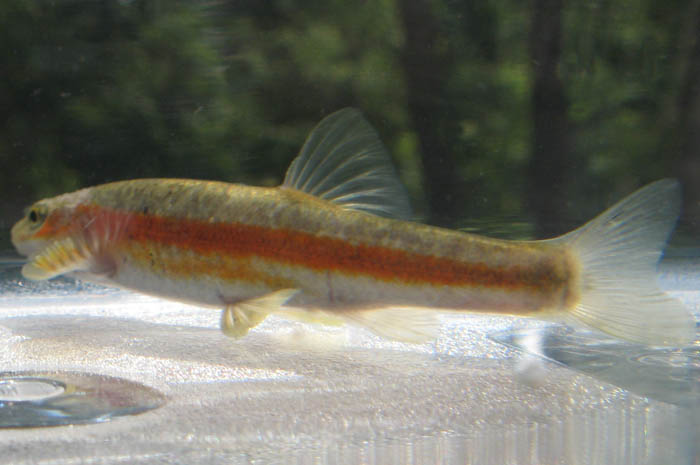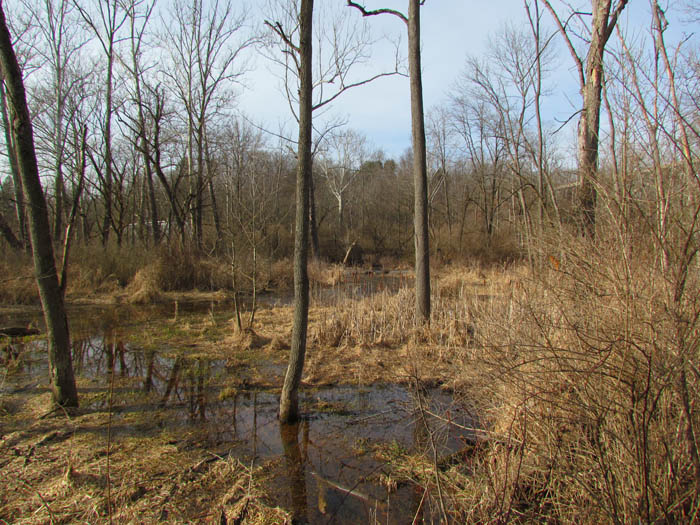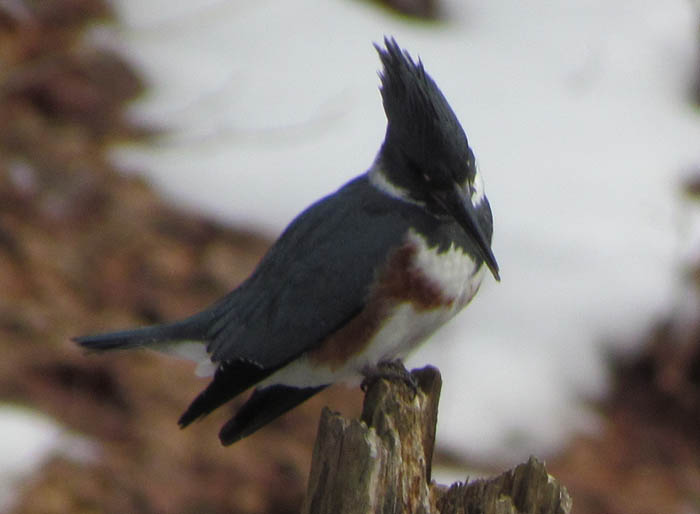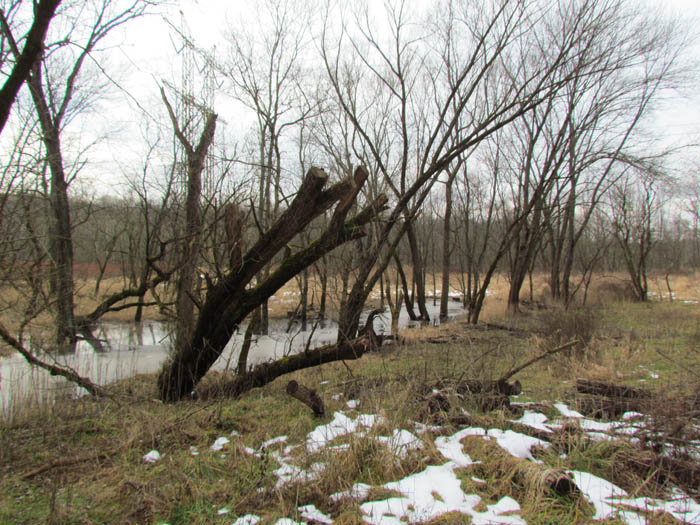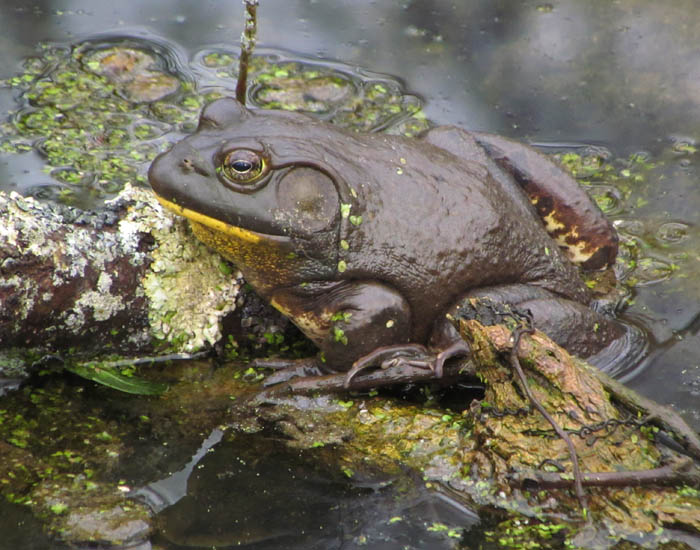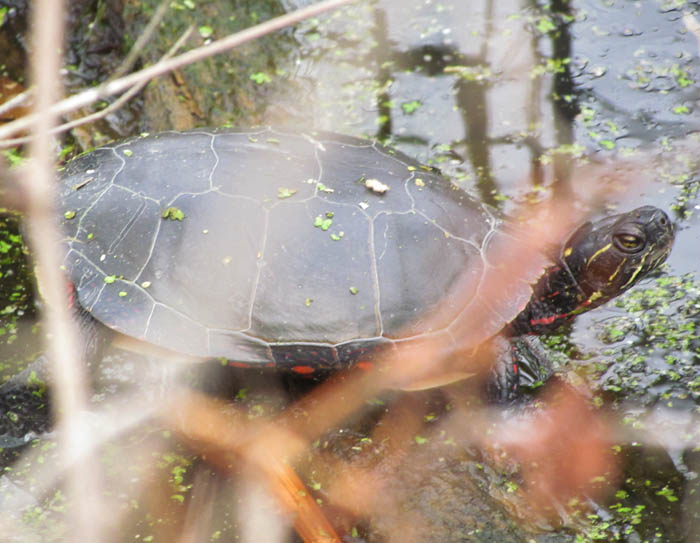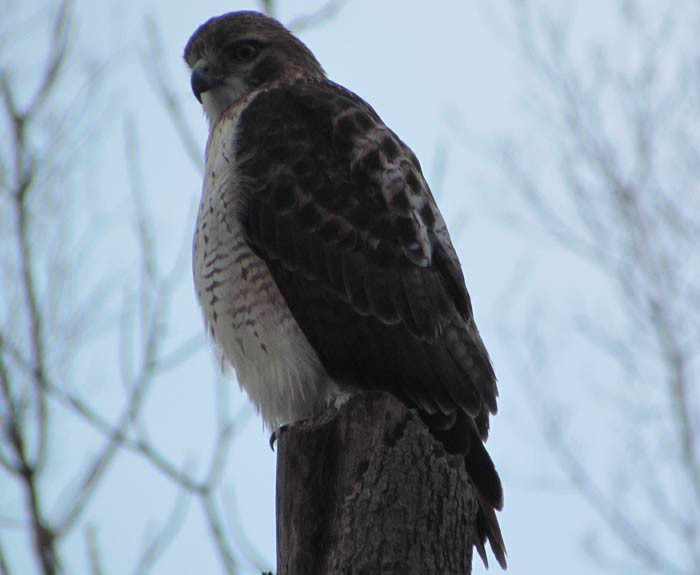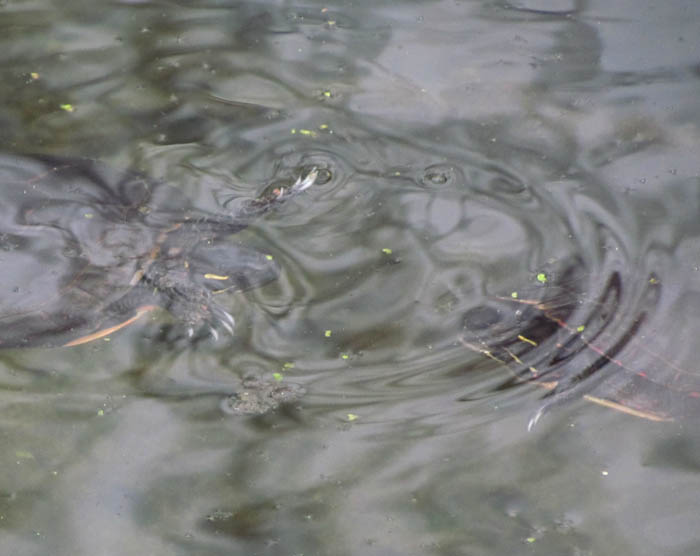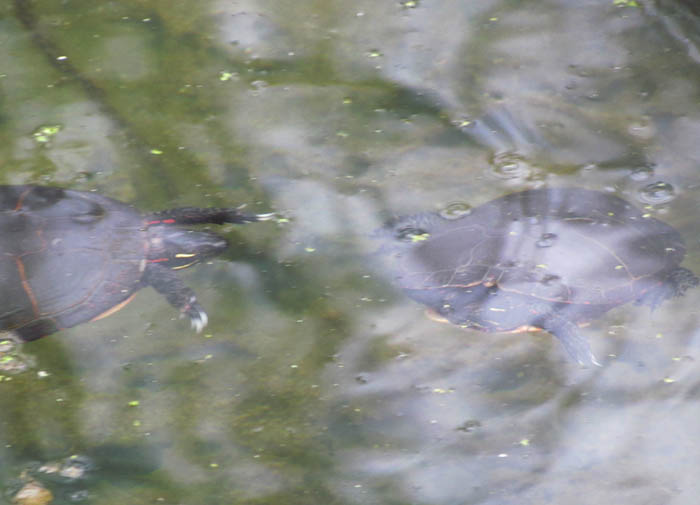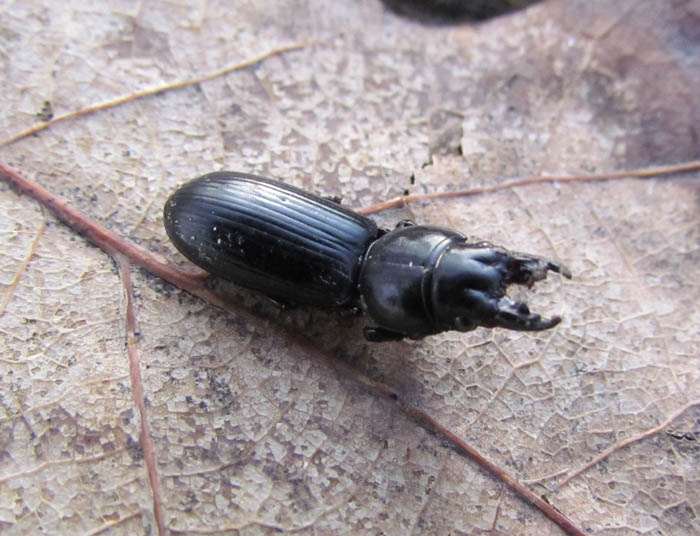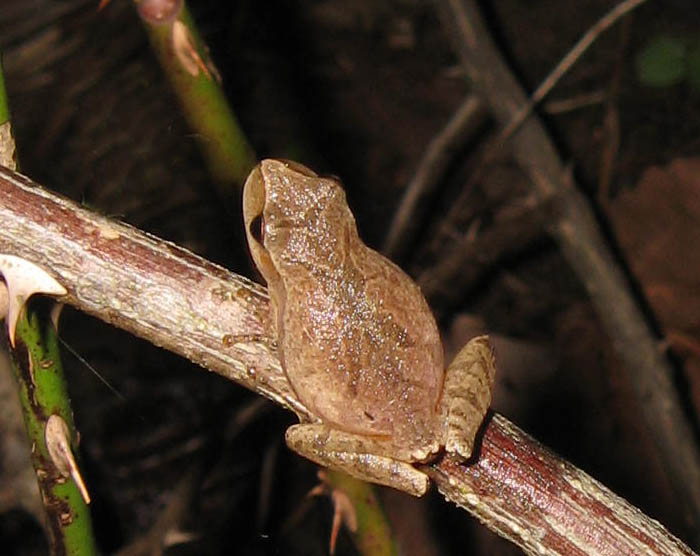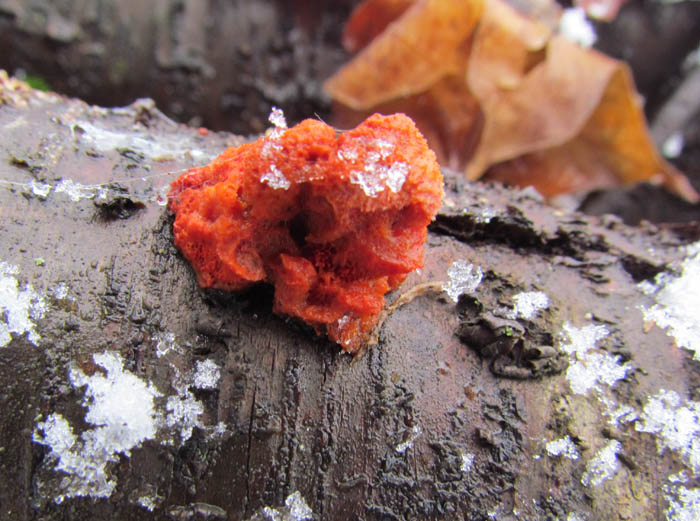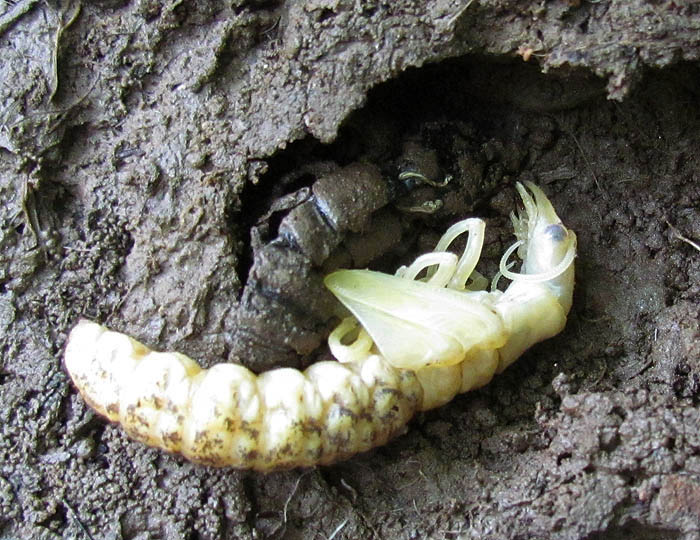In the Winter, the exfoliating bark of Sycamore Trees can look quite appealing under the January sky. The bark flakes off in great irregular masses, leaving the trunk surface mottled, and greenish-white, gray and reddish-brown.
The rigid, brittle nature of the bark tissue lacks the elasticity of the bark of some other trees, so it is incapable of stretching to accommodate the growth of the wood underneath and the tree sheds it off.
This makes for an easy tree to identify – you don’t even need to see the leaves. The camouflage-patterned bark is a feature allowing Sycamore Trees to be recognized in any season.
Growing up in Cleveland, these trees were planted by the city as “shade trees”; they lined the street that I lived on. In a natural setting they are “flood plain” inhabitants and often grow along the edges of rivers and large creeks.
This tree easily reaches heights of 80 feet tall and 60 feet wide, but can grow much larger. While not the tallest tree, is considered the most massive tree (as defined by its circumference) in the eastern United States.
The Sycamore Tree’s leaves are very large and can reach 7 to 8 inches long and wide. Here’s a leaf from last Summer.
The fruit clusters appear as hanging balls, one per stalk. The fruit hangs on all Winter, then falls apart in early Spring to disperse their many small seeds.
During this time of year, Sycamore Trees stand ghostly along river edges, with their smooth white limbs in stark contrast to the brown, textured bark of the trees that surround them.

